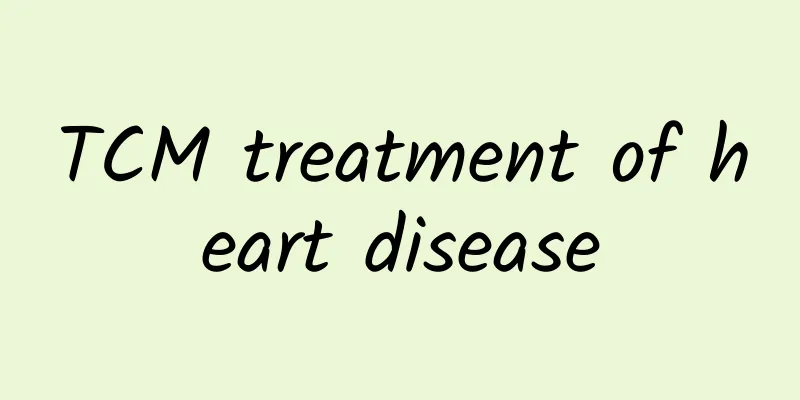Baby rash with fever

|
The situation where a baby still has a fever after visiting the emergency room will leave many mothers helpless, because the baby's body is generally weak after visiting the emergency room, and it is easy to cause symptoms of fever at this time. We should pay attention to the post-operative care methods. There are many causes of emergency situations in young children, which can cause patients to have fevers and rashes to appear after the fever subsides. We should pay attention to skin hygiene issues. 1. What is roseola infantum Roseola infantum, also known as infantile roseola and fever rash, is an acute rash infectious disease common in infants and young children caused by infection with human herpes virus type 6. When the disease occurs, irregular red spots appear on the back, neck and other parts of the body. Mild cold symptoms or persistent high temperature appear within 3-5 days, and a rash appears within 12-24 hours after the fever subsides. For most babies, the symptoms disappear within 1-3 days. The baby will not feel itchy, and it will heal in about a week unless in special circumstances, so there is no need to worry too much. 2. Symptoms of roseola in infants Roseola infantum has two stages. After an incubation period of 5-15 days, the following symptoms appear first: 1. The body temperature suddenly reaches 39℃-40℃ and will continue to have a fever for three or four days, but the child's spirit and appetite are relatively good. 2. The fever goes away after taking antipyretics, but the fever comes back again once the effect of the medicine wears off. 3. When the fever is high, most people will have diarrhea and watery stools, but rarely have a runny nose or cough, or the symptoms may be mild. 4. Sometimes high fever convulsions occur, and some children may also have symptoms such as cough, swollen lymph nodes in the neck, and ear pain. 5. Routine blood examination showed a decrease in white blood cells and a significant increase in lymphocytes. The second stage begins about 4 days after the onset of the disease. The symptoms at this time are: 1. Body temperature quickly returns to normal. 2. Small, clear pink spotted rashes appear, which fade when pressed. They are mostly distributed on the head and trunk and can last for about 4 days without pigmentation or desquamation. 3. Most cases occur at 6-12 months of age, and 50%-60% of children develop the disease at 8-10 months of age. Healthy children rarely have complications, but immunocompromised children may develop complications such as hepatitis or pneumonia. Because meningitis can resemble a childhood emergency, doctors will do further testing on your child to rule out bacterial causes of meningitis, among others. 3. Care after the rash appears in infants 1. Pay attention to reducing the baby's fever When the fever is high, you can use physical cooling methods to reduce the temperature by giving your baby a warm bath or wiping the body with warm water. Appropriate use of antipyretic drugs for infants and young children containing "paracetamol" or "ibuprofen" ingredients. Once convulsions occur, sodium phenobarbital or chloral hydrate should be given, and appropriate fluid replacement can be given. Bromide and phenobarbital are prone to cause rash and should be avoided at this time to reduce diagnostic difficulties. In addition, alcohol baths can easily irritate the delicate skin of children, and it is difficult to distinguish between skin redness and rashes, so it is recommended to use them less. 2. Try to avoid outdoor activities It is best to let the child rest in bed more. The room should be quiet and comfortable, the air should be fresh and circulated, and the quilt should not be too thick or too many to avoid internal heat. 3. Keep your skin clean and hygienic You can give your baby warm water baths frequently, wipe off the sweat on the child's body in time, and avoid drafts to prevent the baby from catching a cold. This can also prevent the baby with the rash from getting infected. Avoid scrubbing the rash with alkaline soaps. Do not let your child scratch the rash as this may break the skin and cause infection. Also, do not apply medicine randomly and try not to irritate the skin. 4. The diet should be light and easy to digest If the child has been weaned, liquid or semi-liquid food can be given. Encourage children to eat small amounts of easily digestible foods such as milk, rice soup, soy milk, porridge and noodles to maintain their physical strength. It is not recommended to drink sweetened water with high sugar content, as the baby’s appetite is poor at this time and it will affect the baby’s appetite. The toxins in the body are excreted faster through sweating, urination and defecation. 5. Drink plenty of water In order to prevent children from dehydration due to fever and promote the excretion of viruses and toxins in the blood, give them more warm water or light fruit juice. This will not only increase their vitamin intake but also facilitate sweating and urination, promoting the excretion of toxins from the urine. 6. Vitamin Supplements Appropriate supplementation of B vitamins and vitamin C under the guidance of a doctor can help alleviate the condition. 7. Pay attention to isolation Avoid cross infection and prevent the spread of roseola infantum. 8. Comfort your baby At this time, some babies may be very dependent on their mothers and hope to stay in their mother's arms all the time. This may be a psychological need of the baby caused by the disease. Therefore, mothers should try their best to meet the psychological needs of their babies, which will also be beneficial to the parent-child relationship. |
<<: Woman with white discharge
>>: Does the rash of roseola infantum itch?
Recommend
Is Panax notoginseng poisonous?
In folk customs, many people have been confusing ...
Are anemia and iron deficiency the same thing?
In life, many friends have certain misunderstandi...
How to measure ovulation day most accurately
Nowadays, more and more couples live in different...
Is cupping a good way to lose weight?
Cupping for weight loss is a very popular way to ...
How to make honeysuckle and licorice tea
Honeysuckle and licorice are two common Chinese h...
Symptoms of thyroid disease
There are many kinds of common diseases. When it ...
What is a scar-prone person?
Scar-prone constitution is also a common constitu...
What are the effects and functions of safflower?
The efficacy and function of safflower can be ref...
Sudden bleeding at eight weeks of pregnancy
Because snacks are popular now, many female frien...
Transient synovitis
I believe that everyone is not very clear about t...
What lozenges can effectively relieve pharyngitis?
Pharyngitis is a common disease in our lives. Som...
Which season has more hair loss?
Seasonal hair loss is also quite common, especial...
What are the treatments for stomach heat and bad breath?
Bad breath caused by stomach heat bothers many pe...
Common knowledge about self-diagnosis of liver disease
Many people find liver disease scary. Because man...
What to do if you vomit during chemotherapy? Pay attention to your diet
Many people must be familiar with the term chemot...









